Your body is floating in a warm, blue bath, neither sinking nor rising. Sunlight shimmers on the white sand below as a sea turtle drifts by. You feel your heart beating slowly and a profound sense of calm floods your mind. The figures floating at the surface seem distant, as if from a different world. Down here, there is just you, your mind, your body, and the water. In this calm, timeless moment, you have glimpsed infinity... you are freediving.
The next time you find yourself on Siaoliouciou (小琉球), or on Green Island (綠島), or at any number of popular snorkeling sites throughout the country, take a closer look at those entering the water and you may notice some peculiar-looking divers. In addition to the mask and snorkel you would expect, they might be carrying long fins like scuba divers, while not carrying any air tanks. These are freedivers, heading out to explore the underwater world while exploring their own limits in breath holding, relaxation, and sheer willpower.
Comparing scuba diving to freediving is a bit like comparing a cable car ride to the top of a mountain with a hike up to the same peak. The cable car saves effort and gives one more time to just enjoy the view; however, it does not provide the sense of achievement, the natural high from physical exertion, or the intimate interaction with the natural world that a hike provides.
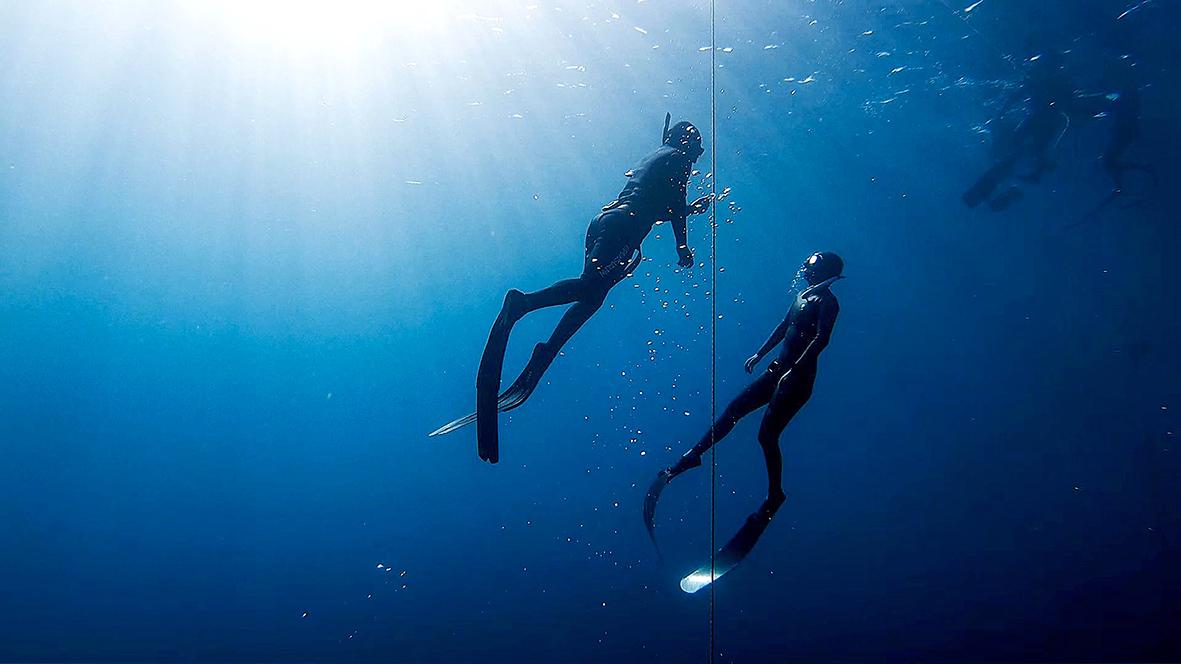
Photo courtesy of Deep Soul
Similarly, freediving to a new PB (personal best) depth after weeks of training can be a source of pride, and the intimate connection to the underwater world one feels as a freediver — sensing changes in buoyancy as one’s torso compresses with depth, and hearing the subtle sounds of the ocean unmarred by the loud bubbling of a regulator — is an experience scuba diving cannot easily provide.
Having already completed my Level 2 AIDA (the French acronym for the International Association for the Development of Apnea) certification last year, I recently decided to further refine my skills with an AIDA3 course at Deep Soul on Siaoliouciou. First, our instructor, “Open”, discussed the mammalian dive response with us and had us each immerse our face in a pail of ice water while holding our breath. This simple exercise initiated the dive response and automatically slowed my heart rate down into the 40s. We then jumped into the pool, where the real work began.
Purpose-built for dive training, Deep Soul’s pool has some peculiar dimensions: At 25 meters in length but with only one lane, it is certainly the narrowest pool I have ever seen. The next time you visit Siaoliouciou, keep an eye out for this oddity, right beside the main road encircling the island.
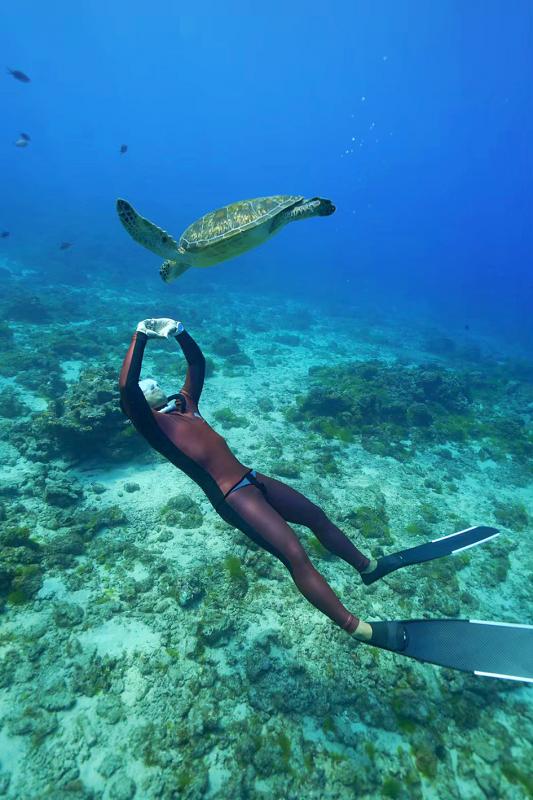
Photo courtesy of Deep Soul
We worked on both pool disciplines — static apnea (a breath hold without moving) and dynamic apnea (holding one’s breath while swimming) — before heading out to the ocean. In all disciplines, the goal is to accept the uncomfortable feeling as the urge to breathe kicks in, even as it builds in intensity and causes “contractions” of the muscles in the upper body. This urge is actually caused by high carbon dioxide in the body, not a shortage of oxygen. The key to freediving longer, deeper, and more enjoyably is to learn to relax and keep this feeling of rising panic under control.
I managed to hold my breath longer than both my classmates during static training, but my pride was quickly obliterated during dynamic training. I pushed as hard as I could, mentally and physically, but could not finish my full training set, though both of my classmates seemed to finish theirs with relative ease. The exhaustion was unlike anything I’d ever felt before and will take a lot more training to conquer. Though freediving emphasizes relaxation, there is an undeniable element of fitness to the sport as well.
The next two days included diving sessions in the ocean, surrounded by the clear blue water, colorful corals, and curious sea turtles that have made Siaoliouciou such a popular diving destination. We refined our technique to try meeting AIDA3 standards, and began experiencing “freefall”. When the full breath in the lungs is compressed enough as one dives deeper, the body becomes less like a balloon and more like a rock, eventually descending without any physical effort at all. At this point, a freediver can relax their entire body and just go along for the ride.
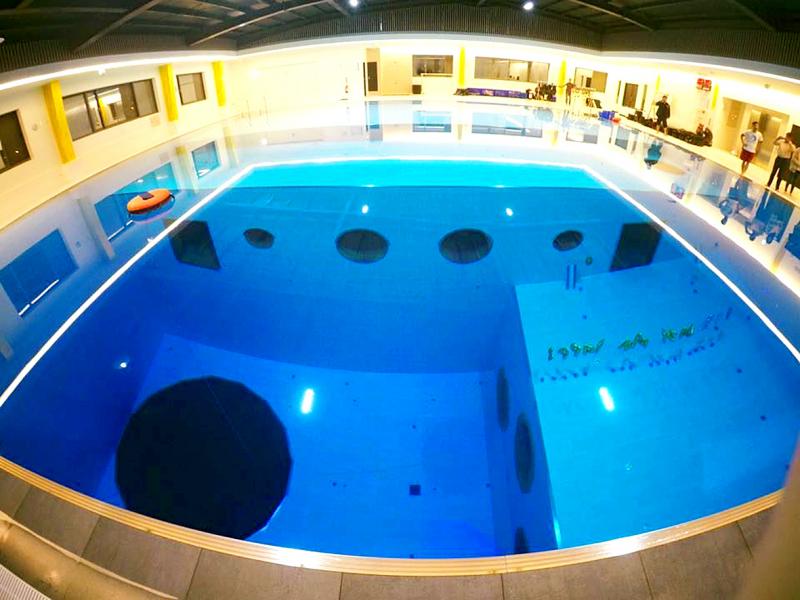
Photo courtesy of DiveCube Hotel
This was all great fun, until one of my classmates emerged from a dive on the last day complaining of a strange sound in one ear. Closer inspection revealed some blood in her ear canal and nose, indicating improper pressure equalization during her last dive. With proper training and awareness, such injuries become less and less likely, but even professionals sometimes suffer from them and the risk is never zero. Her perforated eardrum will heal but, unfortunately, she will have to wait two months before entering the water again. It was a harsh reminder that this sport is not without its risks.
In addition to Deep Soul, Siaoliouciou boasts several other shops that teach freediving, including the all-English Freedive Taiwan. Freediving locations and schools can be found all around Taiwan, from Maoao (卯澳) and Longdong (龍洞) in the north, to Green Island and Orchid Island (蘭嶼) in the east, to Kenting (墾丁) and Siaoliouciou in the south.
There is even a popular freediving destination in downtown Taichung: the DiveCube Hotel (潛立方旅館). This facility — the deepest of its kind in Asia — features a pool with staggered depths ranging from chest-high water down to a staggering 21 meters. This makes it an ideal training site for AIDA2, which requires breath-hold dives to depths of 16 to 20 meters. The facility attracts divers from elsewhere in Asia, as well as locals who prefer the calm, controlled environment of a swimming pool, or the novelty of waving to restaurant patrons while suspended 10 meters underwater.
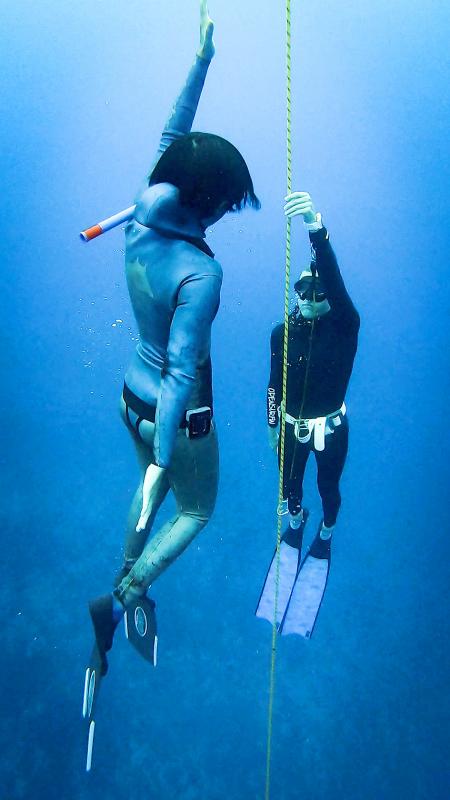
Photo courtesy of Deep Soul
Whether it’s the challenge of pushing one’s breath hold and depth limits, or simply the fun of exploring coastal reefs underwater in a less encumbered way, freediving has something for all water lovers out there and offers a fun new way to explore Taiwan.
On the Net:
Deep Soul Center: www.deepsoul.center
Dive Club City Diving and Hotel: www.divecube.com.tw
Freedive Taiwan: freedivetaiwan.com
* Our regular Highways & Byways column will return to this space next Friday.

Oct. 27 to Nov. 2 Over a breakfast of soymilk and fried dough costing less than NT$400, seven officials and engineers agreed on a NT$400 million plan — unaware that it would mark the beginning of Taiwan’s semiconductor empire. It was a cold February morning in 1974. Gathered at the unassuming shop were Economics minister Sun Yun-hsuan (孫運璿), director-general of Transportation and Communications Kao Yu-shu (高玉樹), Industrial Technology Research Institute (ITRI) president Wang Chao-chen (王兆振), Telecommunications Laboratories director Kang Pao-huang (康寶煌), Executive Yuan secretary-general Fei Hua (費驊), director-general of Telecommunications Fang Hsien-chi (方賢齊) and Radio Corporation of America (RCA) Laboratories director Pan
The consensus on the Chinese Nationalist Party (KMT) chair race is that Cheng Li-wun (鄭麗文) ran a populist, ideological back-to-basics campaign and soundly defeated former Taipei mayor Hau Lung-bin (郝龍斌), the candidate backed by the big institutional players. Cheng tapped into a wave of popular enthusiasm within the KMT, while the institutional players’ get-out-the-vote abilities fell flat, suggesting their power has weakened significantly. Yet, a closer look at the race paints a more complicated picture, raising questions about some analysts’ conclusions, including my own. TURNOUT Here is a surprising statistic: Turnout was 130,678, or 39.46 percent of the 331,145 eligible party
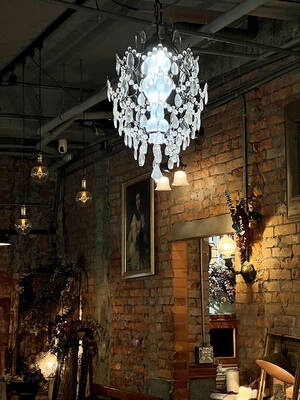
The classic warmth of a good old-fashioned izakaya beckons you in, all cozy nooks and dark wood finishes, as tables order a third round and waiters sling tapas-sized bites and assorted — sometimes unidentifiable — skewered meats. But there’s a romantic hush about this Ximending (西門町) hotspot, with cocktails savored, plating elegant and never rushed and daters and diners lit by candlelight and chandelier. Each chair is mismatched and the assorted tables appear to be the fanciest picks from a nearby flea market. A naked sewing mannequin stands in a dimly lit corner, adorned with antique mirrors and draped foliage

President William Lai (賴清德) has championed Taiwan as an “AI Island” — an artificial intelligence (AI) hub powering the global tech economy. But without major shifts in talent, funding and strategic direction, this vision risks becoming a static fortress: indispensable, yet immobile and vulnerable. It’s time to reframe Taiwan’s ambition. Time to move from a resource-rich AI island to an AI Armada. Why change metaphors? Because choosing the right metaphor shapes both understanding and strategy. The “AI Island” frames our national ambition as a static fortress that, while valuable, is still vulnerable and reactive. Shifting our metaphor to an “AI Armada”